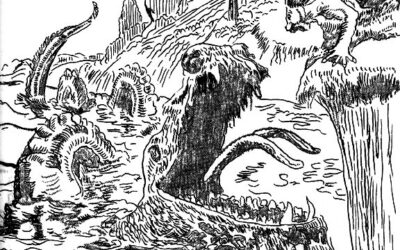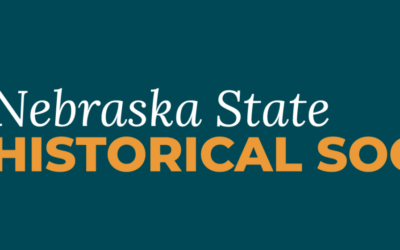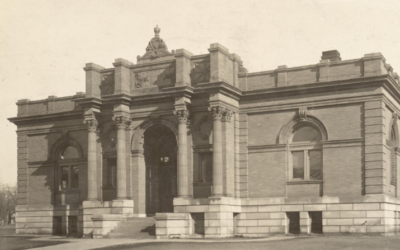The J. Huston Tavern in Arrow Rock, Missouri, was built by Joseph Huston in 1834 and served as the first permanent hotel in town. And this young prairie town did get a lot of traffic – it was very close to the eastern head of the Santa Fe Trail. The trail was established in the 1820s, and the following decades saw countless travelers pass through.
Although the J. Houston Tavern has been through a succession of owners, several additions and improvements, and countless customers, it has become the oldest continuously operating restaurant west of the Mississippi River. The building is now managed by a local corporation and maintained by Missouri State Parks.
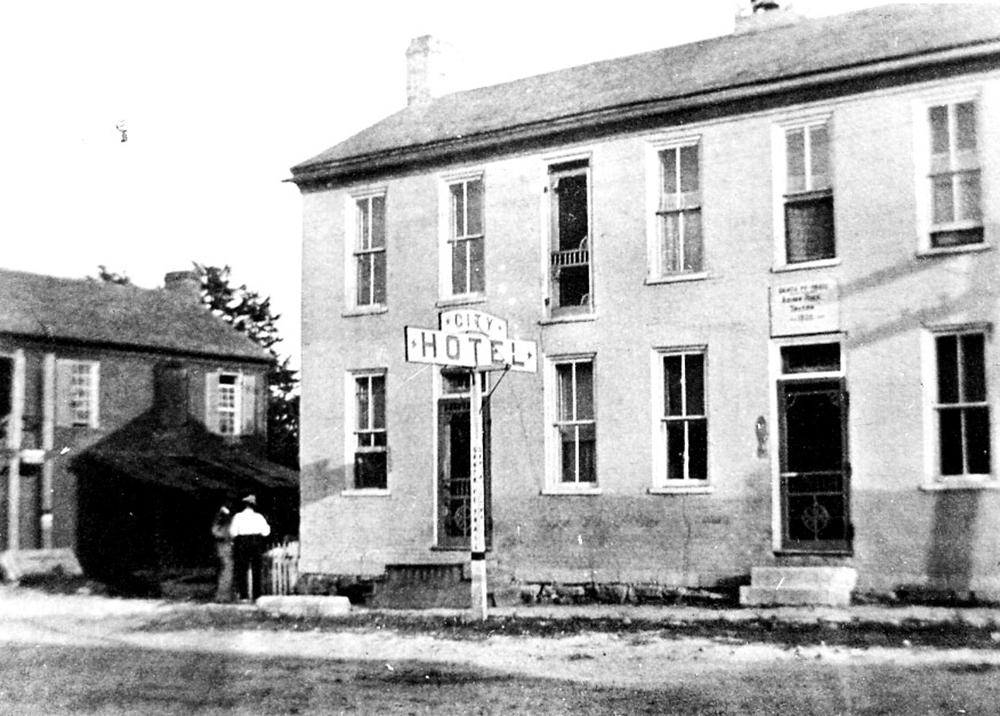
The Arrow Rock Tavern, 1912. Image source: https://www.hustontavern.com
In May 2019, a kitchen fire in the historic tavern forced a temporary closure and an extended effort to salvage and restore damaged artifacts from the building. After the fire, the Ford Conservation Center received five pieces of antique wooden furniture from the tavern. All the pieces had been exposed to smoke and were covered with a visible layer of soot.
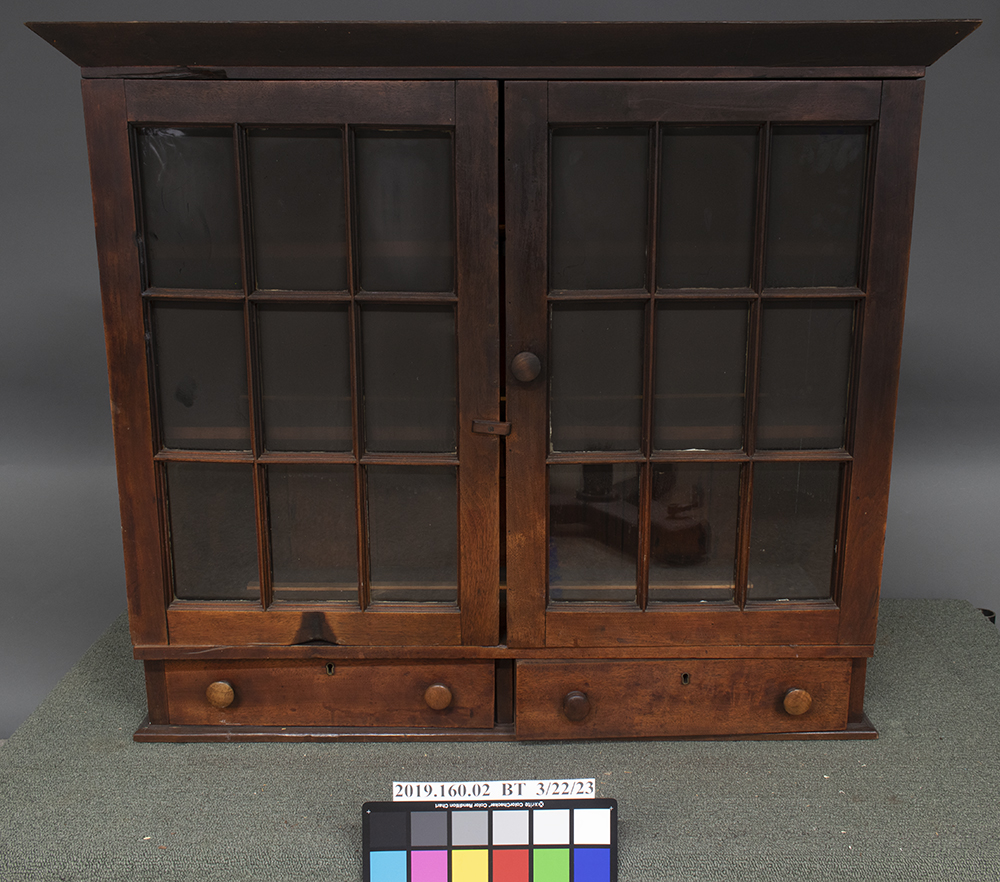
The top of a wood sideboard with glass windows before treatment. The soot layer is darker toward the top of the cabinet, and the glass panes are almost completely obscured.
Because soot is both abrasive and highly acidic, it can cause irreversible damage to exposed objects. If an object stays in contact with soot over a long period, the acidic nature of the soot will cause both physical and chemical changes to the object. These changes can include discoloration and pitting of organic and inorganic materials and corrosion of metal surfaces. Because soot is abrasive, handling or moving objects with a layer of soot on them can also cause surface damage.
Removing soot and stabilizing these objects is a multi-step process. Due to the porous nature of textured wood surfaces, fine particles can quickly become embedded. So, first, an object has to be tested to determine which materials will be most effective for removal without compromising the object further.
Next, loose soot and other accumulations are carefully vacuumed off the object with a HEPA-filtered vacuum and soft brushes. After extensive testing of dry and wet cleaning techniques, Ford Center conservators determined that dry soot sponges effectively removed much of the oily residue left after vacuuming. Soot remaining on the surfaces after using dry soot sponges was removed using custom aqueous cleaning solutions created in the lab after carrying out cleaning tests. The solutions were applied to cotton pads and rolled over the surfaces where stubborn soot remained to try and lift the soot without driving the particles further into the furniture’s surface.

Objects Conservator Rebecca Cashman uses a cotton pad soaked in a custom aqueous cleaning solution. This solution was created in the lab after soot-removal tests were carried out.
In addition to soot removal, some of the furniture had other issues that conservators were able to remedy. These included repairing broken drawers, reattaching loose and detached molding, and tightening loose hardware.
A few sheets of very old, discolored newspaper were found adhered to the back panels of one of the china cabinets. This exciting discovery brought up the question of whether or not the newspaper should be removed, washed, and conserved as part of the treatment. After extensive testing and consulting with the client, it was determined that the newspaper was too brittle for safe removal. Therefore, the newspaper was documented in place and will remain on the back of the cabinet.

Paper Conservator Hilary LeFevere removes small amounts of newspaper from the back of one object for testing.
After treatment, these objects are ready to return to the tavern, where they can remain on display with routine maintenance consisting of stable environmental conditions and regular vacuuming to remove particulate matter.
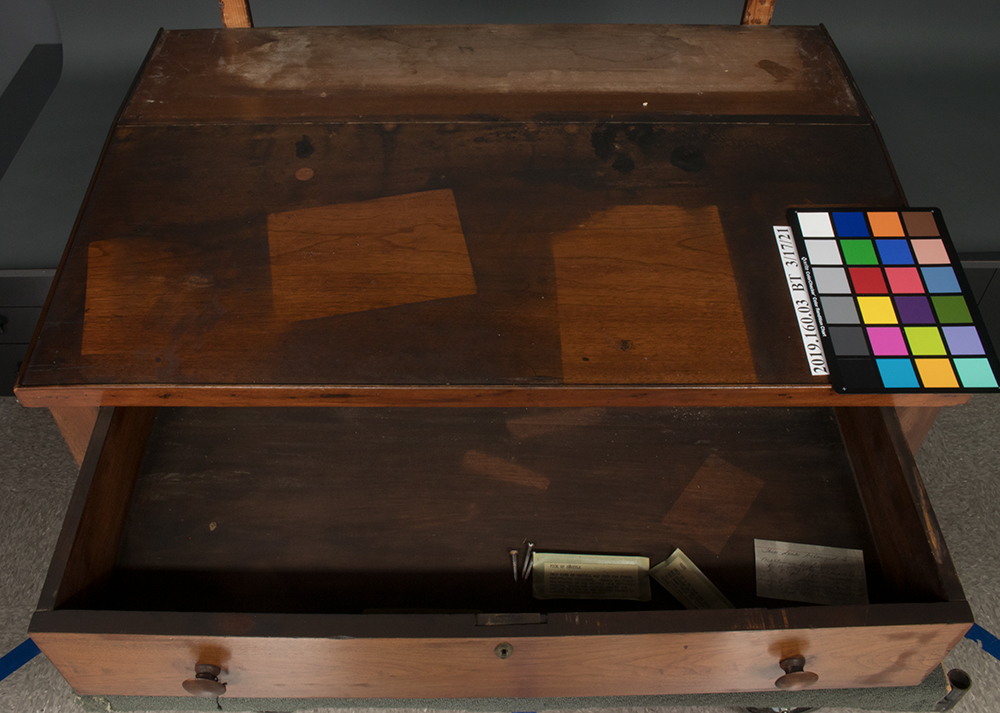
Secretary desk before treatment. Visibly lighter regions had objects covering them during the fire, preventing soot from settling in those areas.
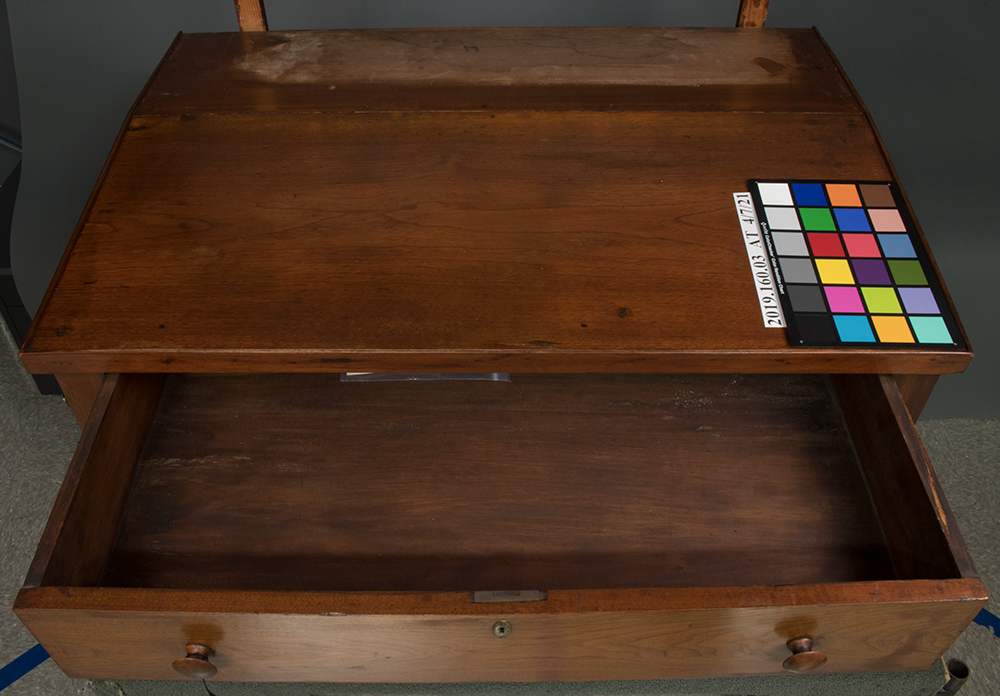
Secretary desk after treatment. The object is very close to its original appearance. If you look closely, though, it is still possible to see that the soot-free areas in the top image are still lighter than those with soot covering them. This illustrates the irreversible color changes that can occur due to soot exposure. If the soot had been left on indefinitely, the discoloration likely could have worsened.

